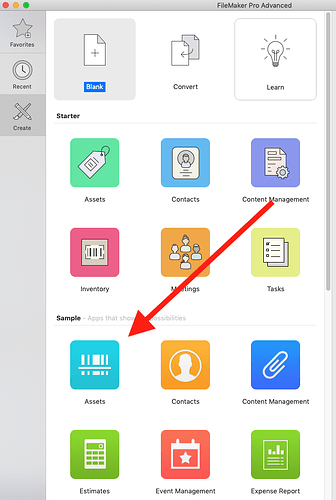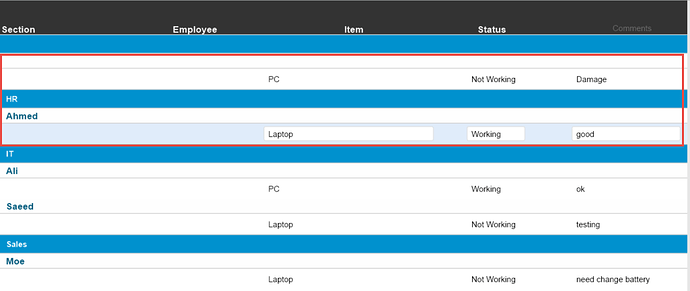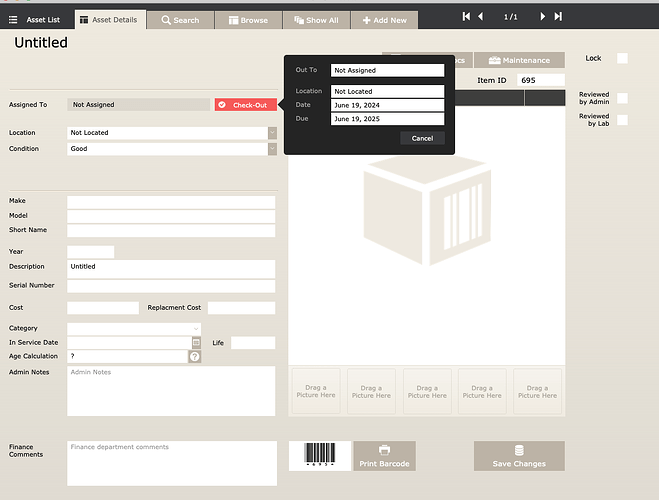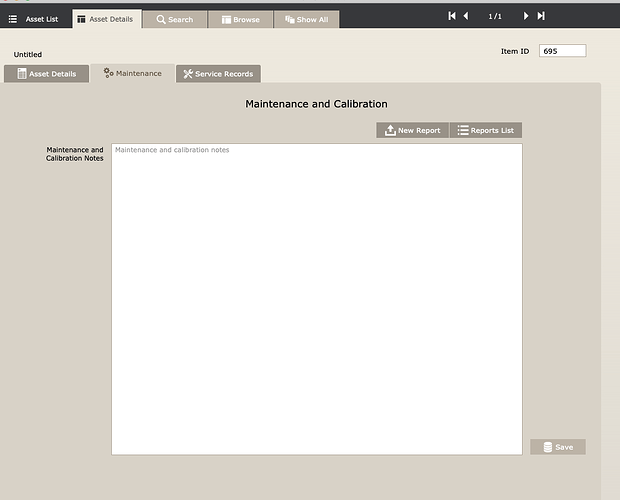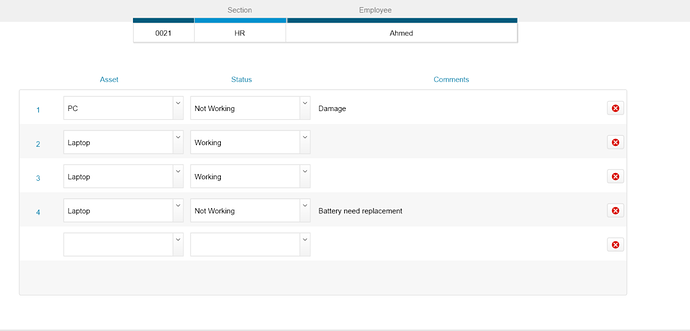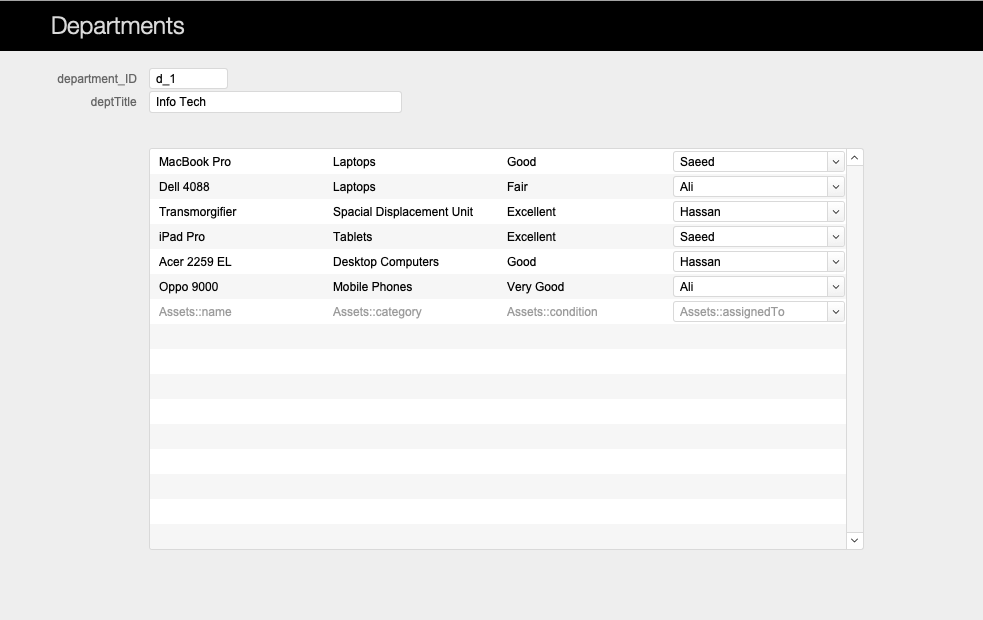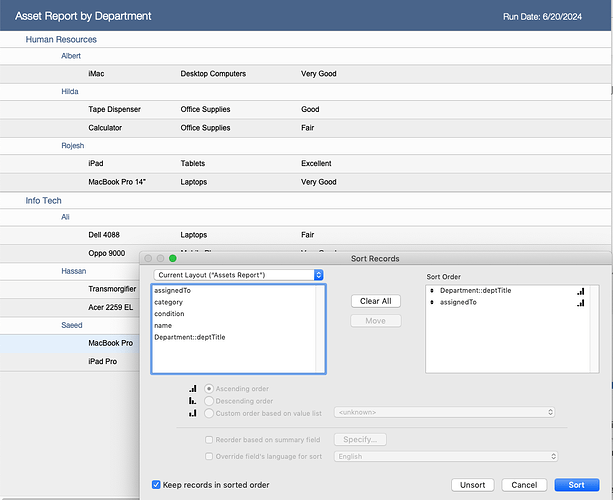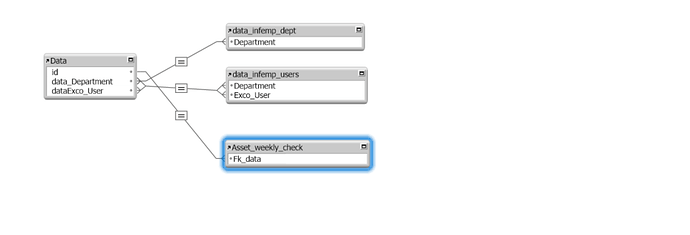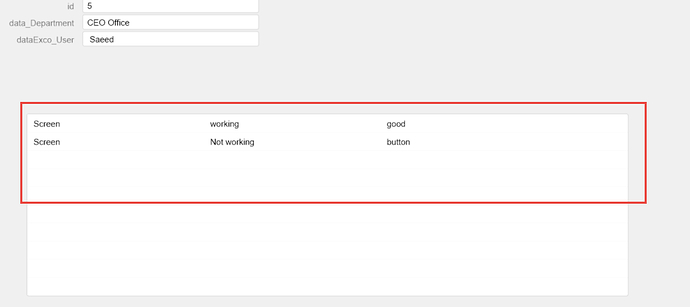@Saeed , sorry if I was not clear. I suggest you rethink your data structure if you can. This will depend on whether this is integrated directly within a larger solution, or if Assets are largely managed in a stand alone file (or together with HR, which is not unusual).
If you have a table named Assets as you do, and you have fields for all the pertinent data collected, including which department to which it is assigned, you eliminate the need for the "Department" and "Assets2" tables/TOs.
I think I'm being confused by your UI/UX and workflow. It appears to be contrary to business models I've encountered, but that doesn't mean it's wrong. We may not have enough info to discern correctly, and/or I'm just not grasping your structure.
Normally, for corporate assets management we start with assets, but I can see that someone may start from Department and make the Assets the "child" of the Department table. That's not what my clients do (nor my business approach is), but that's fine. There's typically more than one way to get where one needs to arrive.
One could start with just Department and Assets tables, setting it such that Assets is the "Child" of Department (i.e. one department can have many assets); adding a portal to assets and enter assets. If each asset is assigned to a staff member within the Department, one could then create a Report to display what is under each department and each employee withing the department. Does that make sense? A portal isn't going work in this setting, but a Report using a sub-summary part will do nicely.
However, one could also structure a JOIN table between Department and Assets in a "many-to-many" relationship and view the details using that TO. A problem in this case would be that if you aren't "assigning" an asset to person in the Assets table (Assets::assignedTo), it gets messy again. Again, the structure isn't quite right for this. In this case one might have a Staff table and a Department table; then a JOIN table ('AssetsAssignedByDept) that store the UUID of Staff and Department in it; finally defining the Assets in the JOIN table. Again, not ideal in my opinion.
You have a "many-to-many" relationship b/n Department and Assets without a Join table which stores a foreign key from each. I believe this is the source of your problem.
Upon which table occurrence are you basing the two screenshots you shared? Perhaps that will help shed some light.
I don't intend to be torturing you, I'm just struggling to grasp your data design. If you want to work from Department to show assets, if we simplify to just the two tables as Parent--<Child, and create a report you'll have exactly what I think you're seeking. Create the Asset record, assign it to the staff member, run the report. The report can be onscreen and a printable version layout. The structure as you have won't return accurately.

